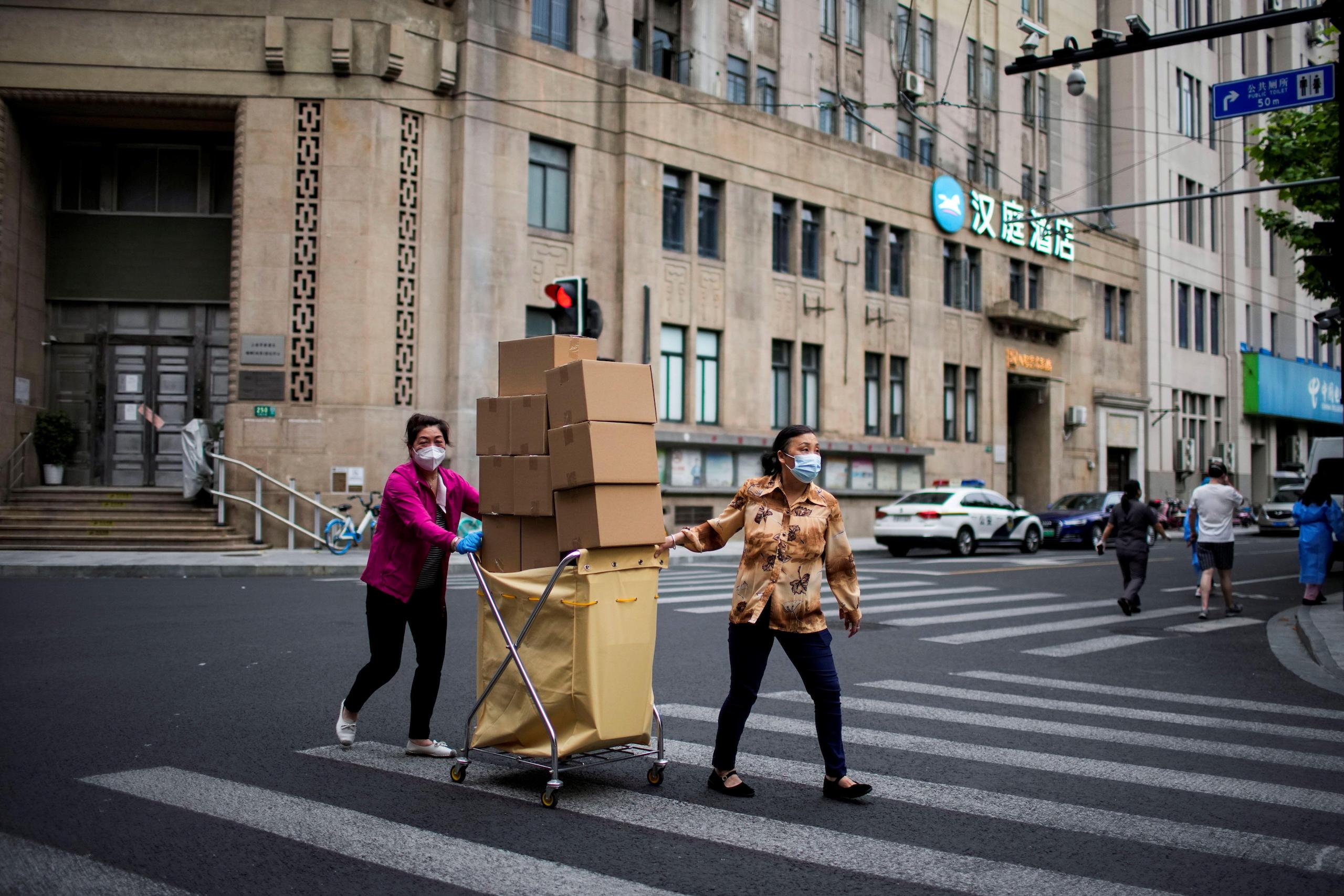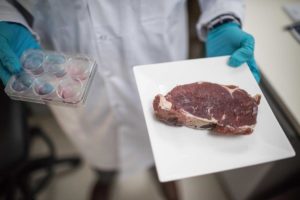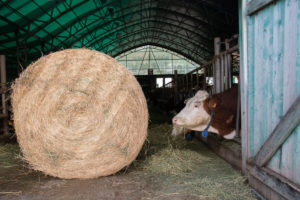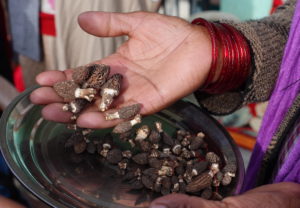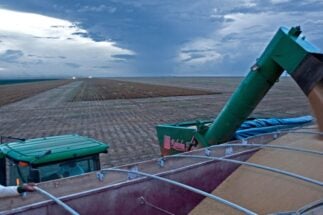1 Chinese cabbage, 6 tomatoes, 2 cucumbers, 1½ onions, 8 potatoes, 2 cabbages…
A Shanghai resident began writing a food diary on 10 April. Hai Xiaozhou (not his real name) is a white-collar worker born in the 1990s who has lived in the city for seven years. He doesn’t usually keep track of his food, but that day he decided he had to start.
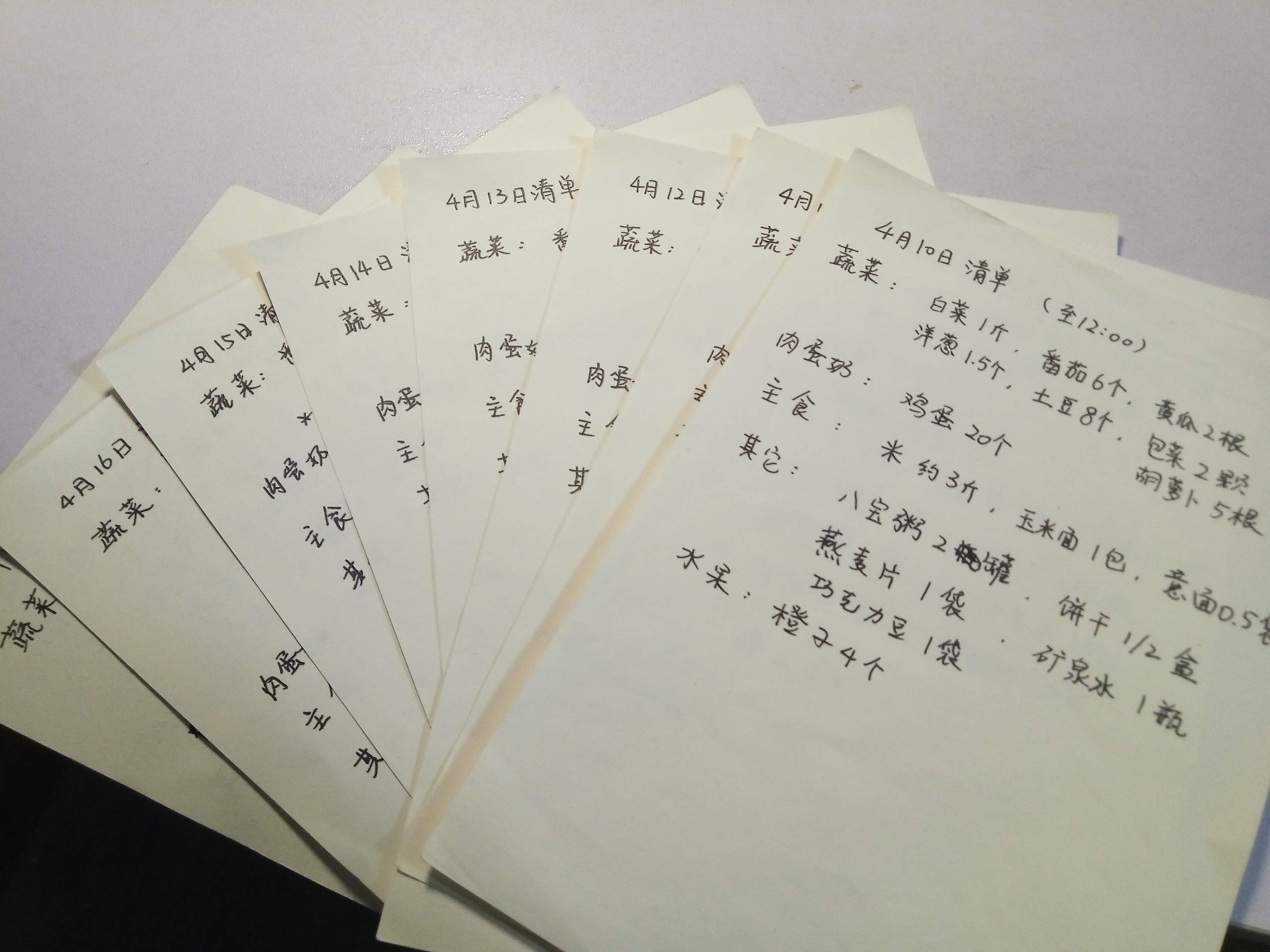
“On 31 March, Shanghai announced a four-day lockdown and PCR-testing process. I thought it was only going to last four days, so I just bought a week’s worth of food,” he explained. “But on 10 April I worried I was going to run out, so I started writing a food diary, updating it every day after lunch, to work out what I needed to get.”
Shanghai has been in extended lockdown ever since, with residents not allowed to leave their homes. Bus, metro, ferry, taxi and ride-sharing services are suspended. Many communities have been in this situation for over two months. With online shopping and food imports hit by the lockdown, Shanghai’s 25 million residents have become reliant on the government for food. But supply chain delays have made food safety an issue, with some fresh fruit arriving spoiled.
A formerly smooth-running urban food supply has suffered multiple problems, forcing residents to come up with their own solutions. In these circumstances, the solidarity economy has come into its own.
First named in Latin America in the 1990s, the approach prioritises social good over profit and emphasises small-scale, local operations. The growth of the solidarity economy in China since the pandemic has raised expectations of it complementing and providing an alternative to China’s existing food systems.
Food supply failures
The pandemic has had a major impact on global food supply chains, exacerbating poverty and hunger. Lower incomes, due to lockdowns and other restrictions on movement, are largely to blame. A recent report by the International Food Policy Research Institute (IFPRI) estimates the number of poor people globally to have risen by about 20%, or 150 million, during the pandemic.
The area where Hai Xiaozhou lives, the Xinhong neighbourhood of Shanghai’s Minhang district, was badly hit by the outbreak. In 45 days of isolation, he received three food parcels from the government. The first two were mainly convenience foods: instant noodles, congee and oats. The third contained 5 jin (2.5 kg) of vegetables.
Before those parcels arrived, he was trying to snap up food via online shopping platforms and by participating in bulk buys through a local chat group. Prices fluctuated significantly during the lockdown: “Prices started to go up in early April, doubling at the worst point. A single stem lettuce was 12 yuan, a carrot 5 yuan, a mandarin orange 3 yuan. In late April, prices fell a bit, varying from 8 to 15 yuan per jin,” he said.

Supplying fresh vegetables to major city clusters is a huge and complex undertaking. In Shanghai, over 70% of that supply comes from outside the city. A report into its food supply shows that vegetables come from 13 different provinces – mostly from nearby Jiangsu and Shandong, but also more distant provinces like Hainan and Yunnan. That can mean a journey of up to 2,000 kilometres. When logistics systems are running smoothly, vegetables can go from field to supermarket shelf in two or three days. But the pandemic increased labour and transportation costs, and timescales. A problem in any part of the system can have knock-on effects elsewhere.
Currently, most cities have rules in place meaning anyone coming back from an area considered a pandemic risk must spend seven days in a centralised quarantine facility, and then isolate at home for a further seven days. So, any driver returning home after a trip to an affected city will be unable to work for 14 days. According to a Yicai report, shipping costs to Shanghai tripled during the outbreak, and drivers were still hard to find. Alongside increased costs and a lack of capacity, there was a fall in efficiency at regional logistics hubs.
Goods being shipped into Shanghai need to arrive on a vehicle with a government-issued pass, which is only valid for a particular route. And there are numerous checks and formalities to be dealt with en route, for both drivers and goods. Yicai followed the entire process, identifying over 10 steps a load of vegetables has to go through to reach Shanghai.
Long cross-provincial supply chains and pandemic safety measures have worsened food safety risks. According to the government in the Shanghai township of Nanqiao, during the lockdown period, a delivery of vegetables from Liaoning partially spoiled before it could reach consumers. Meanwhile, Qibao township apologised when failures in the cold supply chain meant some pork and vegetables arrived spoiled. At a press conference on 21 April, spokesperson Yin Xin said there had been quality issues with some of the government-provided foodstuffs, primarily fresh foods.
The solidarity economy and tackling food supply challenges
“The pandemic exposed an existing issue in the conventional food supply: longer supply chains have more uncertainties, higher costs and more risks. For more resilient supply chains, we need local, shorter, more agile systems which are better able to cope with risk,” said Chang Tianle, convener of the Beijing Organic Farmers’ Market. “The solidarity economy can reduce reliance on the conventional food system, with smaller and more agile and varied links responding to problems from the bottom up.”
The term itself originated in Latin America in the 1990s. With the end of the cold war, the world moved towards globalisation and the integration of regional economies. Latin America, emerging from a debt crisis, imported the neo-liberal model from the US. But neo-liberal reforms caused an imbalance between economic and social development, and Latin America became the world’s most unequal region. The solidarity economy emerged as a response to the single-minded pursuit of efficiency above all else. US academic Ethan Miller describes the solidarity economy as a cooperative, equal, diverse and self-governing vision. Unlike capitalism, it puts human needs and relationships first, rather than competition and profit.
“What the solidarity economy brings together is nearby resources, both in terms of goods and people. It can cover bulk purchases, mutual aid within a community, support for local farmers, and so on,” said Chang Tianle. “It can complement and replace conventional supply chains which haven’t yet fully recovered.”
In ecological terms, the simpler a structure is, the more vulnerable it becomes…We should encourage more diversity, more variety in the production, trade and consumption of foodShi Yan, China’s CSA pioneer and founder of Beijing Shared Harvest Farm
Mutual aid within communities was the first sign of the solidarity economy appearing. An urgent need for personal protective equipment and food prompted many local people to organise group buys and mutual assistance. A recent study from Shanghai’s Fudan University found Shanghai has 13,000 physically demarcated neighbourhoods of various types: from apartments built in the 1990s by government and state-owned enterprises for workers, to developer-built housing complexes, to high-turnover apartment blocks, to close-knit “longtang” or lane communities. Different communities took different approaches, arranging PCR testing and other Covid-prevention measures, or setting up group buys and distributing goods. A resident-run system of mutual aid took shape, operating outside of government channels.
However, it is unclear how long this will last once the crisis abates. Ms Zou lives in Shanghai’s Xuhui district. When the lockdown hit, she didn’t manage to get any vegetables online, and so spent the first 10 days eating food she had cooked and frozen. She lives in an older apartment complex with only 144 households, and the nearby supermarkets only offer bulk buying if there are over 200. So the residents organised their own supply, with the neighbourhood committee taking the lead and volunteers helping out.
“We got some problems solved initially, but there were plenty of disagreements and communication with the committee wasn’t very smooth. There wasn’t much transparency. The group buy ‘team leader’ in charge quit and what was meant to be a single organised group buy became various people making smaller bulk purchases.” Ms Zou was blunt: “I don’t think the model will continue when the pandemic has passed.”
Chang Tianle says that urban mutual aid is currently mostly about bulk buying from normal food channels, which isn’t enough to improve local relationships. “I encourage everyone to build relationships with local farms, to get closer to the land and the producers, to better ensure supply.”
Community-supported agriculture: Emerging from the pandemic
One form the solidarity economy can take is community-supported agriculture. CSA brings consumers and producers together to help each other and build trust. Experiments in it and similar systems began in Japan and Switzerland in the 1960s.
In China, the 1,500 or so CSA farms currently in operation have proved their worth during the pandemic, reducing levels of panic among some city residents. As Shanghai was forced to press the pause button, local eco-farms continued working to extend their reach.
Yuan Qinghua runs an eco-farm of close to 100 mu (6.6 hectares) in the Shanghai village of Haiwan. This is one of the larger eco-farms in Shanghai – most are smaller. It supplies around 100 families using a membership system. Depending on their subscription type, each family gets over 10 jin of fresh veg direct from the field on a daily or weekly basis. Recipients described it as a great relief during difficult times.
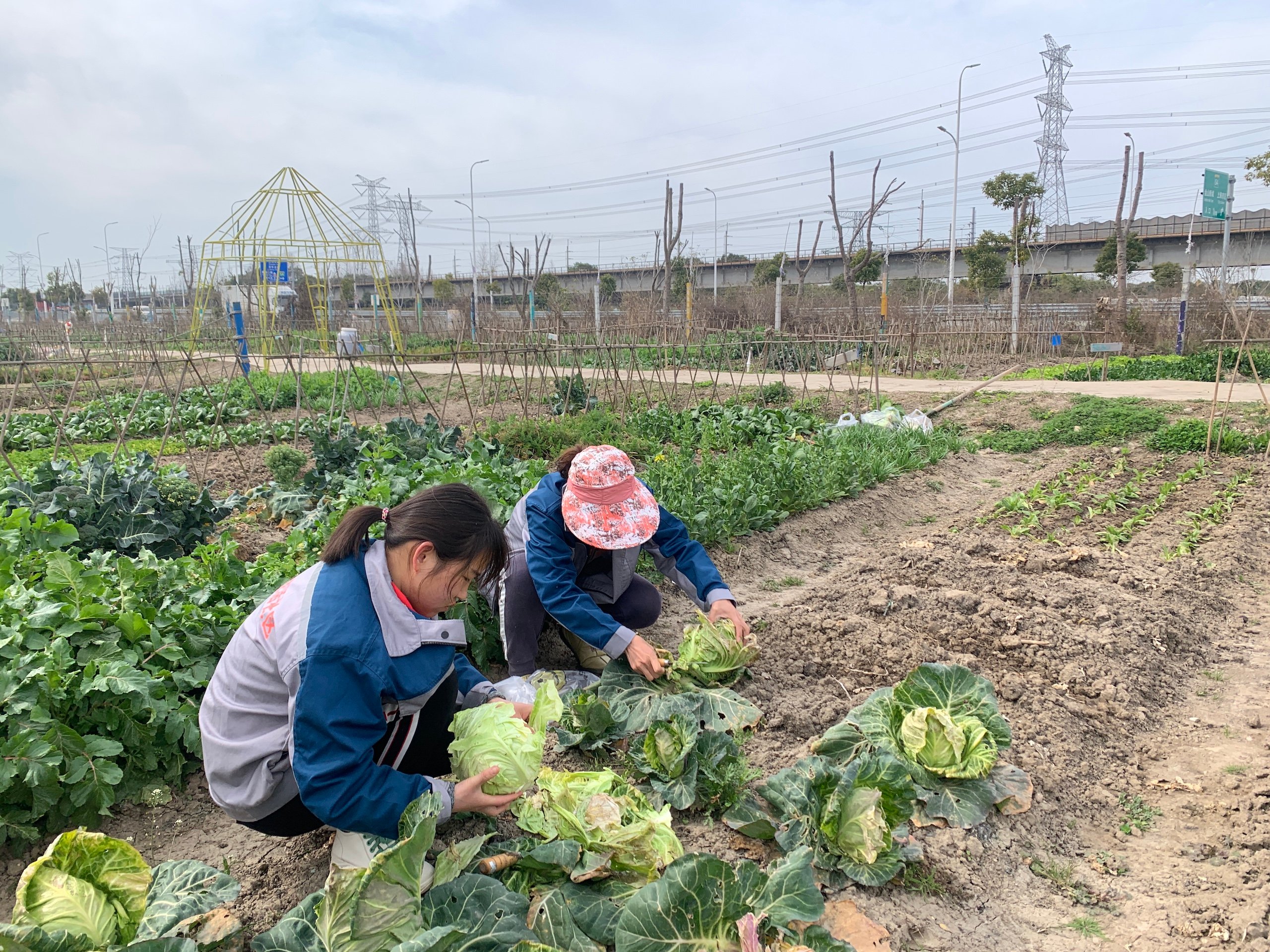
Small-scale eco-farms struggle to get their products onto supermarket shelves and tend to supply members directly, or reach consumers via organisations such as the Beijing Organic Farmers’ Market. So, how many families are Shanghai’s eco-farms feeding? Currently, nobody knows. But their potential adds up and should not be overlooked. Statistics from Beijing Organic Farmers’ Market, which was founded in 2010, shows that it now has over 120 eco-farm members, with over 2 million sales made.
Food prices have fluctuated wildly during the lockdown, but prices on the solidarity economy have been much more stable. The prices charged by Yuan Qinghua’s farm are agreed with the community in advance: 15 yuan a jin for any type of crop. Prices can only change every three years, and can only go up by 5% at a time. Yuan said: “One thousand pak choi seeds only cost a few yuan, while a thousand tomato seeds of a specific breed can cost hundreds of yuan. Usually, the price is decided by the market. But, in my eyes, all vegetables are equal and the prices should be too. Our prices aren’t affected by the pandemic or what’s happening on the market. The solidarity economy is an alternative market, not driven by supply and demand or capital. It’s about communities communicating and helping each other.”
Promoting fair trading, direct links between people, and unity and mutual aid, rather than the maximisation of profit, is at the heart of CSA.
The subscription model provides stability for farmers engaged in the unpredictable business of producing fresh foods. But prior to the pandemic, high prices prevented the spread of CSA. Eco-farms, which avoid fertiliser, pesticide, herbicide and ripeners, have higher costs than conventional farms. Shi Yan, China’s CSA pioneer and founder of Beijing Shared Harvest Farm, said that the prices – almost double those of supermarkets – and the need to pay in advance, can put consumers off. “The biggest challenge for CSA isn’t just consumer awareness. It’s also competition with industrialised agriculture.”
Shi Yan explained that a major feature of CSA is environmentally friendly production and local sales, with no intermediary between farm and consumer. This avoids the use of fertilisers and pesticides, and means no traders or logistics firms take a cut.
According to the World Bank International Comparison Program, food prices in China, especially for vegetables, are low compared to the rest of the world, and much lower than in the EU and US. That reflects the efficiency of China’s food market. But it also means CSA has had to survive in the cracks between large-scale farms, fertiliser and pesticide makers, processing plants and major supermarkets.
At its core, it’s about how farmers and consumers can take control of their interests, rather than be part of the value chains of huge companiesShi Yan, China’s CSA pioneer and founder of Beijing Shared Harvest Farm
“The pandemic taught everyone that CSA isn’t just about a partnership between producers and consumers. At its core, it’s about how farmers and consumers can take control of their interests, rather than be part of the value chains of huge companies,” said Shi Yan. Nationally, China’s CSA farms have survived the pandemic, and most have seen orders multiply. But Shi Yan says society as a whole needs to transition to more sustainable development if the sector is to flourish.
She points out that transitioning to a greener and more resilient food system will require overcoming the idea that only simplified and large-scale operations can be efficient. “During a long-lasting lockdown, CSA showed the resilience and agility that the conventional food system lacked. And in ecological terms, the simpler a structure is, the more vulnerable it becomes,” she said. “We should encourage more diversity, more variety in the production, trade and consumption of food.”
Jiang Gaoming, a researcher at the Chinese Academy of Sciences’ Institute of Botany, says inclusivity in future food systems will mean support for local ecological agriculture, making local food systems more efficient. He said: “The pandemic affected rural areas less, as they are less densely populated and had better access to food. Developing local ecological agriculture and closing the distance between people and their food will add more local food to urban diets, provide more jobs and protect the environment and biodiversity. Healthier eating will also boost immune systems.”
“The pandemic has given us an opportunity to reconsider how we should live alongside nature, and how we should manage production. The solidarity economy should be popularised. A varied and inclusive food system will help boost food production and provide resilience, helping mitigate the impacts of crises such as the pandemic, and also help with post-crisis recovery,” said Jiang.
